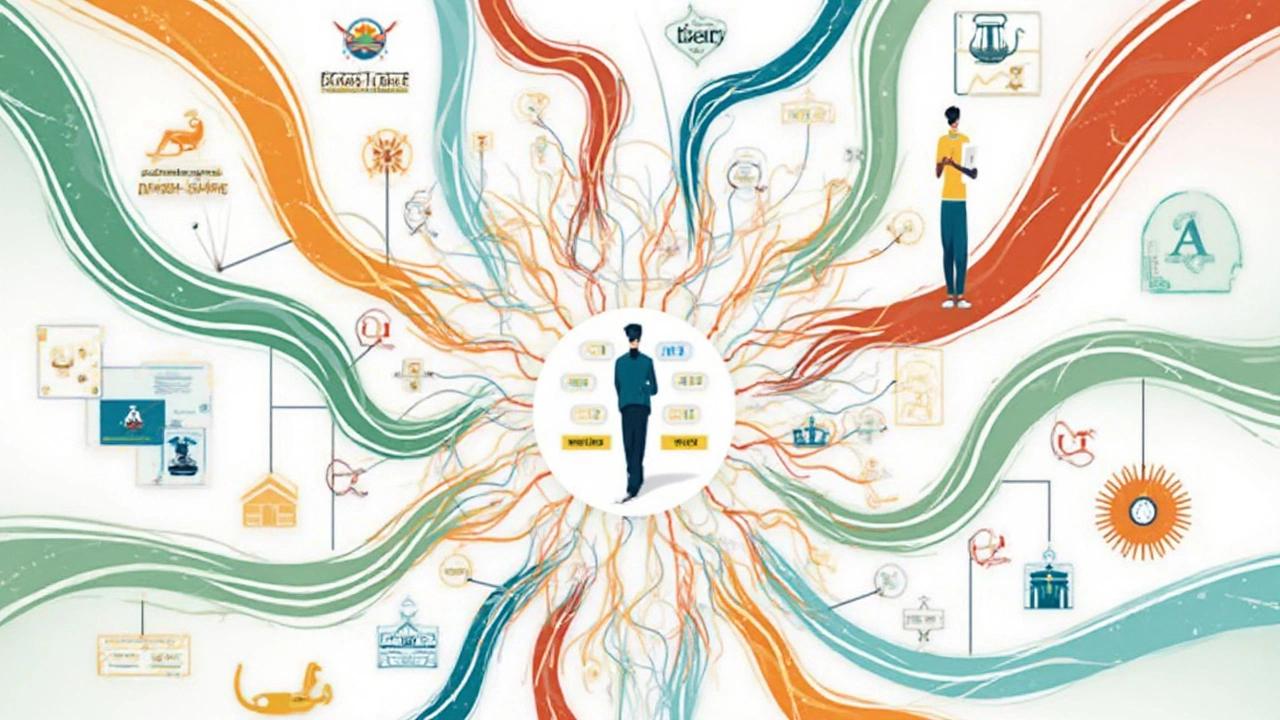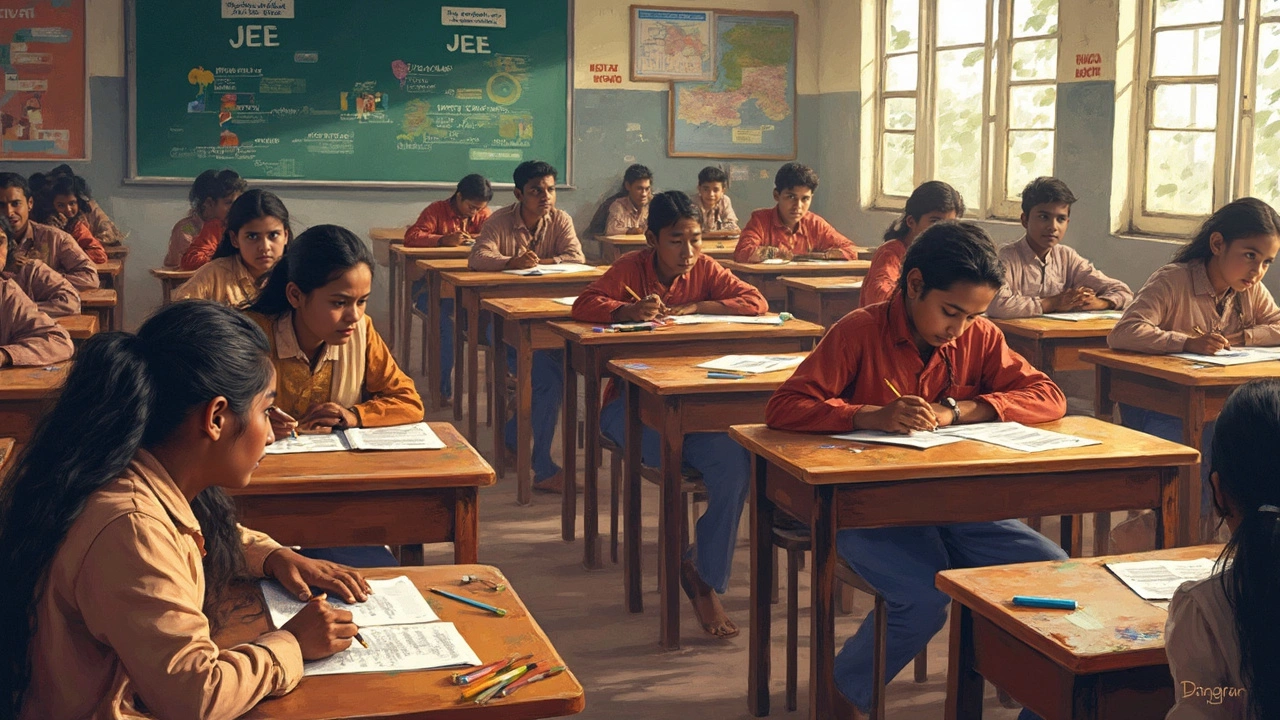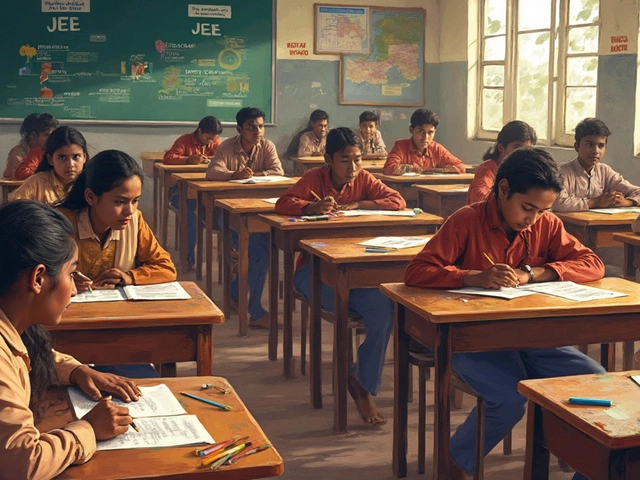Every year, lakhs of students stare at their JEE Main score wondering, "Will this get me into an NIT?" It’s not as simple as hitting a magic number—percentile requirements shift depending on your category, which state you’re from, and that year’s competition.
First thing—NITs don’t just look at your raw score. They care about your percentile. That means you’re ranked against all the other people who appeared for the exam, not just how many answers you got right. The catch? Even small differences in percentile can push you ahead of thousands in the race for a seat.
If you’re aiming for the most popular NITs like Trichy, Surathkal, or Warangal—and eyeing a core branch like Computer Science—you usually need a percentile above 99. But if you’re open to other branches or NITs, you can still get in with a lower percentile, especially if you have a state quota or belong to a reserved category. Sound complicated? It is, but knowing the recent cutoffs and how the system works gives you a real edge.
- Basics of JEE Main Percentile
- Recent NIT Cutoff Trends
- State Quota and Category Impact
- Top Branches vs. Lower Branches: Percentile Differences
- Common Myths and Surprising Facts
- How to Target the Right Percentile
Basics of JEE Main Percentile
If you’re confused by what JEE Main percentile really means, you’re not alone. It’s not the same as marks or rank—percentile tells you how you did compared to everybody else who took the test. If you score at the 90th percentile, that means you did better than 90% of the candidates in your session.
The weird part? The actual marks could be very different for the same percentile each year, since it depends on how tough the paper was and how students performed nationwide. That’s why you should always check the latest data, not last year’s rumors or predictions from coaching centers.
- Percentile scores are calculated session-wise using a process called normalization, so that everyone is judged fairly no matter how easy or hard their session was.
- It’s your JEE Main percentile that NITs use during admissions, not raw marks or AIR rank alone.
- For most NITs, the final seat allotment goes by the best percentile if you’ve appeared for multiple sessions.
Here’s a table showing what percentile typically matched to AIR (All India Rank) and marks in recent memory, just so you get a sense of what you're aiming for:
| Percentile | Approx. AIR | Expected Marks Range |
|---|---|---|
| 99.9+ | Top 1000 | 240+ |
| 99.5 | ~5000 | 200-220 |
| 98 | ~20,000 | 155-170 |
| 95 | ~50,000 | 130-140 |
| 90 | ~100,000 | 110-120 |
Getting a handle on percentile is super helpful for your planning. Remember: focus on boosting your percentile, not just increasing your score. The tiny jump from 97 to 98 percentile easily puts you ahead of thousands of students—that translates into more NITs and branches opening up for you.
Recent NIT Cutoff Trends
Tracking NIT cutoffs year by year gives you a real sense of what percentile you should be aiming for. The truth is, cutoffs shift a bit every year, but some things stay pretty stable. Take 2024—general category students who wanted Computer Science at NIT Trichy, Surathkal, or Warangal needed a percentile above 99.5. For branches like Mechanical or Civil, it dropped to about 98 or slightly lower in these top NITs.
Move away from the 'top 5' NITs, and there’s breathing room. For example, NIT Silchar and NIT Jalandhar often accept General category students for core branches if you’re above 97 percentile. Still, if you belong to SC, ST, or OBC categories, you get in at much lower percentiles—sometimes as low as 82 for SC and even 65 for ST in some NITs and branches.
Don’t forget state quota. If you’re from the home state of an NIT, the cutoff is generally 2-4 percentile points lower than the All India cutoff. That gives local students a real advantage.
Here’s a quick breakdown of JEE Main percentile cutoffs in recent years for General category:
- NIT Trichy (CSE): 99.6-99.8
- NIT Warangal (CSE): 99.5-99.7
- NIT Surathkal (CSE): 99.6-99.8
- NIT Calicut (E&C): 98.9-99.2
- NIT Raipur (Mech): 96.5-97
For lower demand branches or spot rounds, cutoffs can go down further, especially in newer NITs.
Keep in mind: numbers change slightly depending on the year, seat matrix, and how tough the JEE Main was. But the trend over the last three years is clear: if you’re after a seat in a top NIT for Computer Science, you need to be in the top 1%—a NIT cutoff typically above 99 percentile. Open category, lesser-known NITs and branches? You have options even with a percentile in the low-90s.
State Quota and Category Impact
This is the real gamechanger in NIT admissions. NITs split their seats 50-50 between the Home State quota (for kids with a qualifying exam from the same state as the NIT) and the Other State quota (for everyone else). That means your chances can swing wildly depending on where you did your schooling.
Suppose you’re from Chhattisgarh and you’re eyeing NIT Raipur. You’ll compete for the Home State seats, and usually, the NIT cutoff is way lower for Home State than Other State candidates. In 2024, for Computer Science, the Home State closing percentile at NIT Raipur was around 97.2, while for Other State it hovered around 98.6. That small gap? Thousands of ranks apart!
Category makes an even bigger difference. Benefit for OBC, SC, ST, and EWS categories is real and significant. To give you a sharp sense of how percentiles swing, check out this data from JEE Main 2024 cutoffs for Computer Science at NIT Calicut:
| Category | Home State Percentile | Other State Percentile |
|---|---|---|
| General | 98.4 | 99.6 |
| OBC-NCL | 95.7 | 97.8 |
| SC | 86.6 | 93.1 |
| ST | 77.9 | 88.4 |
| EWS | 96.0 | 98.3 |
So, aiming for a popular branch at a top NIT? Your state and your category aren’t just side details—they could totally change the percentile you need. If you’re from a less represented state, Home State quota is your real advantage. If you have a reserved category, check those closing percentiles—they’re often 4–10 points lower than the General cutoff for the same branch.
Quick tip: Always track the closing percentiles for both your Home State and Other State, plus your reservation category, for each NIT and branch you’re interested in. That’s how you set a realistic, personalized target percentile instead of following random advice online.

Top Branches vs. Lower Branches: Percentile Differences
This is where things get serious. Not all branches in an NIT ask for the same percentile, and the difference between Computer Science and, say, Metallurgical Engineering, can be huge.
Let’s talk numbers. If you’re eyeing Computer Science Engineering (CSE) at top NITs like Trichy, Surathkal, or Warangal, you usually need to be above the 99th percentile. For General category, this often means a JEE Main percentile between 99.5 and 99.85 for CSE. ECE (Electronics & Communication) or Mechanical might settle around the 98.5 to 99.4 percentile range. On the other hand, less popular branches – think Civil, Chemical, or Production – can drop as low as the 95th percentile, especially in later rounds or in NITs that aren’t ranked at the very top.
| Branch | Top NITs Percentile Cutoff (Gen-2024) | Lower Ranked NITs Percentile Cutoff (Gen-2024) |
|---|---|---|
| Computer Science | 99.6 – 99.85 | 98 – 99.2 |
| Electronics & Comm. | 99.1 – 99.6 | 97 – 98.7 |
| Mechanical | 98.8 – 99.3 | 95.5 – 97 |
| Civil/Chemical | 97 – 98.5 | 93 – 95.5 |
Reservation categories make a huge impact. If you’re from OBC, SC, or ST, these numbers fall a lot—sometimes by 5-15 percentiles. For example, SC students could get CSE at a top NIT with a percentile around 92-95, depending on the year’s seat matrix.
Another thing: If you’re fine with newer or lesser-known NITs, the pressure drops. In 2024, Production Engineering at NIT Puducherry closed for the General category at around 91 percentile. So, if your dream is just to enter an NIT—not necessarily the most famous one or the toughest branch—you’ve got more options than you think.
Keep in mind, these cutoffs shift every year depending on how tough the paper was and how many people fill the seats. But this table gives you a solid reality check so you can set your target and choose your branches smartly when it’s time for counseling.
Common Myths and Surprising Facts
If you think just one number guarantees you a place in an NIT, think again. There’s a lot of noise and confusion around NIT admissions—let’s clear it up with some facts that actually matter.
First, many people believe that everyone needs at least a 99 percentile to get into any NIT. That’s just not true. For some branches and for certain reserved categories, students have actually made it in with a percentile in the low 90s, and sometimes even below. It mainly depends on the branch, category, and state quota. For instance, in 2024, Computer Science at NIT Trichy for general category stopped at around 99.6, but for less popular branches or reserved categories, the cutoff dropped way lower.
Another huge myth: your score matters more than the percentile. Not really. Percentile is what decides your rank, and that’s what colleges use. The scores out of 300 will vary every year, but the JEE Main percentile sorts the real competition.
Here are a few more surprising truths:
- State quota can be a huge game changer. Over half of NIT seats are reserved for students from the home state, and these cutoffs are usually lower than the All India quota cutoffs.
- Category reservation works in your favor if you’re eligible. OBC, SC, and ST candidates often get in with percentiles much lower than the general category cutoff.
- Boys and girls have completely separate cutoffs for some branches. Girls can sometimes get a branch with a lower percentile due to the supernumerary (female-only) seats.
- NITs don’t all have the same reputation—core branches at newer NITs need lower percentiles than older or more famous ones.
- Your board marks don’t count towards NIT admissions, as long as you clear the 75% board eligibility (or are in the top 20 percentile of your board exams).
One last thing—don’t obsess over last year’s cutoff down to the decimal. Cutoffs swing each year, depending on toughness of paper, number of candidates, and seat matrix. Use those numbers as a guide, not a guarantee.
How to Target the Right Percentile
Chasing that ideal NIT cutoff can feel overwhelming, but breaking it down makes it way less scary. Your first move? Figure out which NITs and branches fit your profile. Scroll through official JoSAA opening and closing ranks from last year to spot the percentiles that actually got people in—they're public and easy to find. For instance, Computer Science at NIT Trichy needed close to 99.5 percentile for a general category student, while branches like Civil or Metallurgy in less popular NITs sometimes dipped to around 96-97.
Now, set a realistic target percentile based on this data, your category, and your state quota. Resist the urge to aim blindly for 100—focus on what you truly need for your choices. If you're from a state with fewer applicants or you qualify for reservation, you might get in with a slightly lower percentile.
Here’s how you can move closer to your target:
- Prioritize accuracy in your mock tests. Each negative mark stings a lot more when battling for a tight percentile spot. Track silly mistakes and cut them out ruthlessly.
- Simulate the real exam conditions often. Time yourself and resist peeking at solutions. The real exam’s pressure is what trips up most students, not the questions themselves.
- Analyze your weak spots. If Chemistry keeps pulling your percentile down, focus there. Consistently scoring well in all three sections acts like an insurance policy against tricky papers.
- Stay updated with changing cutoff data—percentiles shift every year based on difficulty and number of candidates. Don’t assume last year’s cutoff is a perfect rule.
Be smart about filling in choices when actual counseling opens. Sometimes, slightly less popular branches fill at much lower percentiles. You don’t have to sacrifice your NIT dream because of a tiny percentile gap—sometimes, just tweaking your branch or campus preference does the trick.
The bottom line: Aim for a percentile that matches your target branch and category, focus on accuracy, and keep adjusting your strategy based on real-time feedback. That’s how you beat the system—without burning out.



